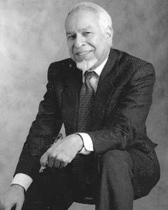Kamal Seth
Professor Emeritus

Prof. Seth has done distinguished research in both nuclear and particle experimental physics. His research interests have been characterized by the pursuit of the unconventional and the exotic. He has used neutrons, protons(antiprotons), electrons(positrons), and pions at various national and international accelerator facilities. He made measurements with neutrons to establish the nuclear optical model, discovered exotic nuclei like helium 9, and has made definitive searches for dibaryons, hybrid mesons, exotic multiquark states, and glueballs. More recently, his experimentation has focused on the study of elementary structures of strongly interacting particles of Quantum Chromodynamics (QCD), the quarks and gluons. At the Brookhaven National Laboratory his collaboration discovered the first ‘hybrids’, exotic constructs of QCD containing valence quarks and gluons. At CERN he made the definitive search for the more exotic ‘glueballs’, containing only gluons. At the Meson Factory at the Los Alamos National Lab Prof. Seth pioneered the use of the exotic pion double charge exchange (DCX) reaction to create exotic nuclei, and to study the separate roles of protons and neutrons in nuclear excitations. At Fermilab his collaboration made the highest precision studies in the spectroscopy of charmonium, hadrons made of a charm quark and a charm antiquark, using antiproton-proton annihilation. At the CAESER electron-positron collider at Cornell Prof. Seth’s group discovered spin-singlet states of ccbar charmonium, and bbar bottomonium which had eluded numerous previous searches. Presently, Prof. Seth is collaborating in the building of a new antiproton facility (PANDA) at Darmstadt, Germany, and the GLUEX photon beam facility at the Thomas Jefferson National Accelerator Facility in Virginia.
Awards and Honors
- Seth was made Fellow of the American Physical Society in 1972.
- Seth was awarded the Alexander von Humboldt Prize of Germany in 2010.
Representative Publications
- “Measurement of the Etab(1S) Mass and the Branching Fraction for Upsilon(3S) -> gamma Etab(1S)”, Phys. Rev. D81, 031104(R) (2010).
- “Hyperfine Interaction in Quarkonia”, Europhysics Journal WC7006, 1 (2010).
- “Precision Measurement of the Mass of hc(1P1) State of Charmonium”, Phys. Rev. Lett. 101, 182003 (2008); “Observation of hc(1P1) State of Charmonium” Phys. Rev. Lett. 95, 102003 (2005).
- “Precision Determination of the D^0 Mass”, Phys. Rev. Lett. 98, 092002 (2007).
- “Challenges in Hadron Physics”, Summary talk of HADRON07, Frascati Physics Series XLVI, 407-431 (2007).
- “Precision Measurements of the Timelike Electromagnetic Form Factors of Pion, Kaon, and Proton”, Phys. Rev. Lett. 95, 261803 (2005).
- “Observation of Etac’ Production in Photon-Photon Fusion at CLEO”, Phys. Rev. Lett. 92, 142001 (2004).
- “Charmonium Attenuation in Quark-Gluon Plasmas”, Proc. Symp. on Multiparticle Dynamics, Tihany (Hungary), World Scientific, 275 (2005).
- “A High Resolution Search for the Tensor Glueball Candidate Ksi(2230)”, Phys. Lett. B520, 175 (2001); “Hybrids and Glueballs – A Status Report”, Modern Phys. Lett. A18, 330 (2003).
- “Evidence for Exotic Meson Production in the Reaction pi^-p -> eta pi^-p at 18 GeV/c”, Phys. Rev. Lett. 79, 1630 (1997).
- “Precision Measurements of Charmonium States Formed in ppbar Annihilation”, Phys. Rev. Lett. 68, 1468 (1992).
- “Exotic Nucleus Helium-9 and its Excited States”, Phys Rev. Lett. 58, 1930 (1987).
- “The Current Status of Dibaryon Searches”, Springer Lecture Notes in Physics 234, 150 (1985).
- “Nuclear Structure: Many Faces, Many Probes” (Review at PANIC 1984 Conf.), Nucl. Phys. A434, 287c-328c (1985).
